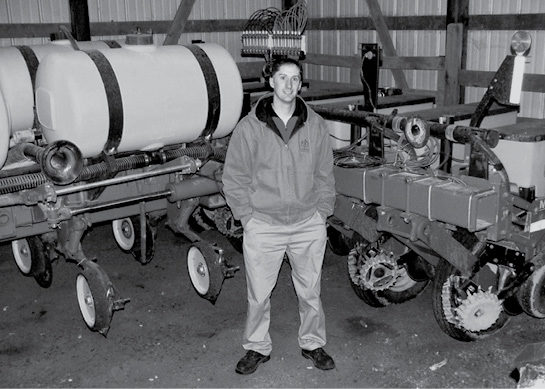No-Till Farmer
Get full access NOW to the most comprehensive, powerful and easy-to-use online resource for no-tillage practices. Just one good idea will pay for your subscription hundreds of times over.

PETE GOTTFRIED ROLLS his office chair over to the horizontal file. He instantly pulls out a snapshot of a field that resembles a parking lot. Heavy rains can cause the sticky, tight soils, high in magnesium, to crust and compact, explains the Nevada, Ohio, no-tiller.
To fight the compaction and improve the soil condition, Gottfried made no-tilling a goal. The young farmer knew it wouldn’t be easy.
“I call Wyandot County the tillage capital of the world,” he says, shaking his head back and forth. “You work the ground in the fall, and then you work it again in the spring another couple of times.”
The 1999 Wilmington College ag science graduate worked at the local co-op for a couple of years while farming and observed how no-tilling improved the north central Ohio soils. While taking soil samples, he probed thousands of acres and compared how different tillage and management systems affected the same soil types.
Gottfried was intrigued by the differences no-tilling produced. When he started farming full time in 2002, he decided to switch to no-tilling.
“I have to have something that works when it’s hot or dry or cool or wet, or whether there’s 40 inches or 10 inches of rain,” he says. “No-till gives us a lot of those things.”

Gottfried didn’t want to jump into no-tilling without first addressing the soils. In fields where there were severe compaction layers, a disc ripper or an in-line ripper was run just below the hard…